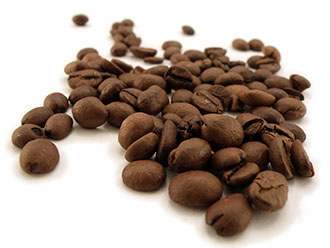Students Making Coffee

Working at a coffee stand can be a convenient source of employment for college students because it fits so well with a college student’s schedule. It is important to provide the best product one can while in class and the same thing goes for being a barista, a coffee preparer and server.
George Graham, a sophomore taking 13 credits, works at Starbucks in the Steelhead Plaza in Roseburg.
Liz Schroeder, a sophomore taking 14 credits, works at Java Run and first worked at Umpqua Coffee Co. in Roseburg.
Kylie Fitzgerald, a Roseburg High School graduate, works with Schroeder at Java Run, which offers almond milk as a substitute, as does other coffee stands.
Hannah Radford, who is also an RHS graduate and freshman at UCC, works at the Human Bean. This coffee franchise which opened in Ashland, Oregon in 1998 now has 50 locations in eight states.
The Perfect Cup of Joe
These students, plus some other UCC student baristas, share their knowledge about making the perfect cup of joe.
“The way the shots are pulled vary on the weather. You have to switch your grind accordingly,” Schroeder said.
The tamp ensures uniformity of extraction by leveling and packing grounds to ensure equal and consistent water contact as it is forced through the coffee, according to Seattle Coffee Gear. The proper tamp method is to hold your elbow at 90 degrees, rest your portafilter on a level surface and then apply 30 lbs of pressure until the coffee has an even and polished look.
If your dose, grind and tamp are ideal, the first part of the brew will be dark, then turn into a golden brown/foamy mixture (the crema) that flows into the cup in a thin, curly stream that is just strong enough to hold together, also according to Seattle Coffee Gear. The brewing time you’re looking for is between 20–30 seconds, so if you’re running too long or too short, check your grind, dose and tamp.
“You should always have a good crema on top [of the espresso shot]. There should never be any liquid,” Don Gilman, a current UCC journalism student and former manager of Sweet Life patisserie in Eugene, said.
Using the Best Beans
One of the biggest factors in a good cup of coffee relates to the products used. The brand of coffee determines the flavor and strength, and the brand of syrup used to flavor special drinks makes a difference.
Many people confuse espresso with regular house coffee. There is quite a difference, but it’s not the type of beans. Any brand of coffee can be used to make espresso or home coffee. It all depends on how the beans are ground and pressed.
Most stands grind the beans themselves, and there are house coffee pots that have a small grinder installed as well. The process of heat, pressure, and time is what makes good espresso, but the beans are still important, according to Gilman.
“The lighter the bean (as far as roast), the more caffeine. Darker Roasts taste stronger but have less caffeine,” Gilman said.
Every company puts their own twist into coffee drinks. Many traditional drinks have been altered in order to increase sales at places like Starbucks. Take, for instance, the Frappuccino. Traditionally, a Frappuccino is a mix of espresso shots, milk and flavor (optional), blended with ice in a blender. However, Starbucks has a “Frappuccino” in the cold drinks section of most grocery stores that is liquid, not frozen.

Another example is the macchiato. “Macchiato,” which means “marked” in Italian, traditionally consists of one shot of espresso and a tiny splash of milk or foam to “mark” the top. Artistic baristas with a high level of coffee skills can create images with the foam markings. But only those who do their research know the origins of the macchiato. People who drink Starbucks on a regular basis think a macchiato is a strong latte–an espresso with extra shots and steamed milk.

